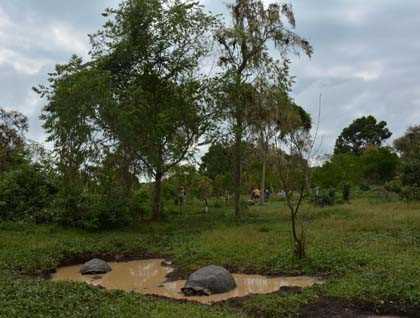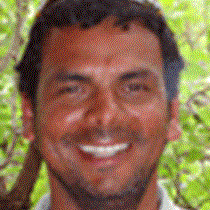We are coming back from the southern islands, where we spent the first part of our expedition. It is early Tuesday morning, and straight ahead of the ship lies Santa Cruz Island. The island of Santa Cruz was name after the holy cross. Juan Jose Flores, who led the colonization of the Galapagos Islands, thought the names of the islands should be clear reflection of the religion identity of the people of the new Republic of Ecuador that had just settled the first colony in Galapagos, at the island of Santa Maria (holy Mary).
Santa Cruz is the second largest island in Galapagos, and Puerto Ayora is the largest town; to get to our first destination this morning, we are disembarking at the municipal pier to by bus go to the Darwin Station. Our visit to the station will be the opportunity to learn about all of the efforts of organizations like The Galapagos National Park Service and the Government of Ecuador over the past 50 years, to preserve the natural beauty of the park. This is the most successful protection program since 1969, when the pioneers of conservation in Galapagos decided to tackle two important conservation issues—the extermination of introduced organisms, and the restoration of giant tortoise populations. The tortoise breeding program is clear evidence of their success at bringing back a near-extinct population of this iconic species. We walk by the enclosures and see this odd creatures to understand them better, and after the great experience in the station we are ready to go to highlands in Santa Cruz and see this giants in the wild. But first, we are going to stop in a local farm, to get to know how locals used to make a living, before tourism was as profitable as it is currently in the archipelago.







